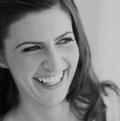Cited By
View all- Wisessing PMcDonnell R(2020)Evalu-light: A practical approach for evaluating character lighting in real-timeACM Symposium on Applied Perception 202010.1145/3385955.3407937(1-6)Online publication date: 12-Sep-2020
- Wisessing PZibrek KCunningham DDingliana JMcDonnell R(2020)Enlighten MeACM Transactions on Graphics10.1145/338319539:3(1-12)Online publication date: 17-Apr-2020
- Cui MLu SWang MYang YLai YRosin P(2020)3D computational modeling and perceptual analysis of kinetic depth effectsComputational Visual Media10.1007/s41095-020-0180-x6:3(265-277)Online publication date: 13-Aug-2020



